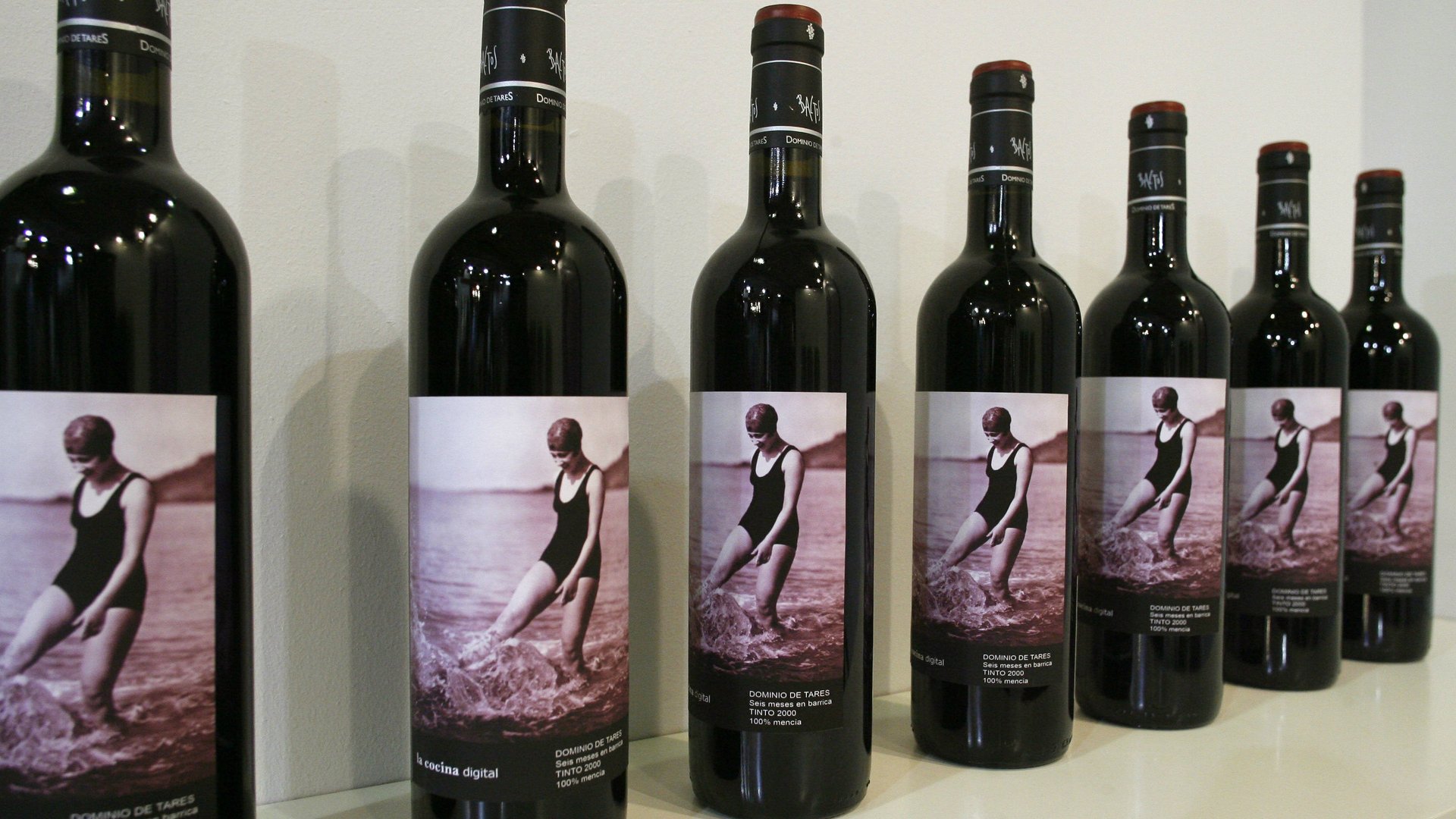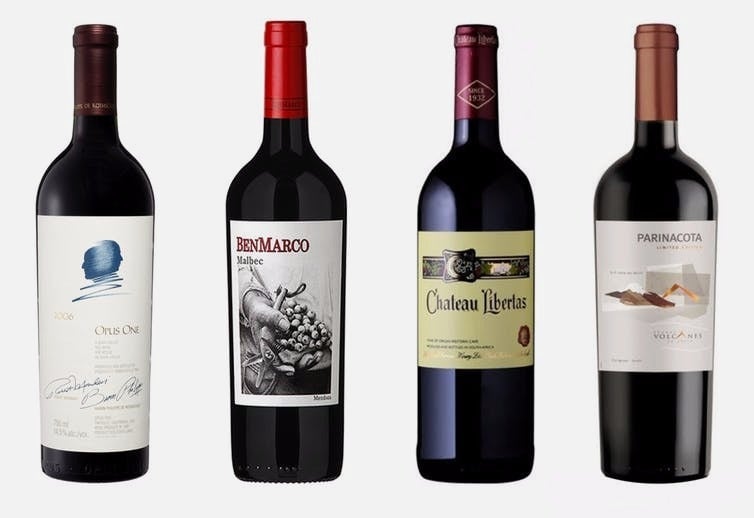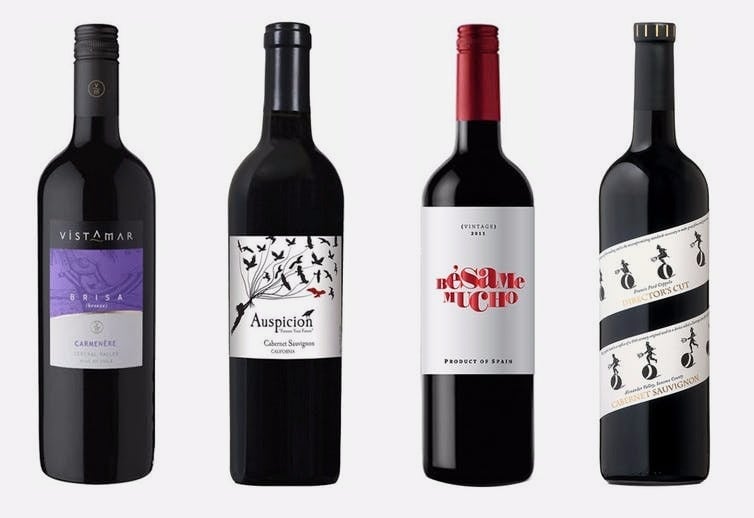A semiotician explains the stories told by wine labels
Marketing professionals often consider packaging to be a product’s primary means of communication. It communicates explicit and implicit messages to the consumer, particularly through its visual aspect.


Marketing professionals often consider packaging to be a product’s primary means of communication. It communicates explicit and implicit messages to the consumer, particularly through its visual aspect.
In the wine sector, the importance of packaging is all the greater as marketers generally make little use of such media as TV, radio, and billboards, either because of legal constraints or budget limitations. Thus if wine brands want to signify their differences and tell a story, be it real or fictional, about their product, they do so primarily through label design.
The semiotician François Bobrie analyzed the Wine Spectator’s Top 100 over five years and identified two broad categories of labels that tell different types of stories. The first are “ego-centered Jupiterian” labels that develop stories about the wine itself, its greatness and history, and the savoir-faire behind its production. The second are “consumer-oriented Bacchic” labels, which evoke not only the wine but also the consumers who drink it and the benefits of doing so.
For example, the Château les Chevaliers label (shown below) falls into the first category. Through the use of of uppercase serif letters, gilding, an etching of a chateau and a coat of arms, it tells the story of a prestigious and aristocratic wine. The Château Clerc Milon label uses the same overall codes in its typography and colors, but the representation of dancers also evokes festivities and thus some of the benefits associated with wine drinking, such as exhilaration and headiness.

Four ego-centered stories
A recent study of 166 wine labels from vineyards in Australia’s Barossa Valley refined this typology by identifying four subtypes of “ego-centered” labels, each with its own illustrative theme. Some represent the production site while others highlight the winegrower or winemaker. Some of the labels displayed visual codes evoking the theme of culture, whereas others evoked nature. In all, four distinct types of brand storytelling emerge:
- Producer/culture: telling the story of wine as a work of art, whose intrinsic qualities come from the expertise and inspiration of an artist-winemaker.
- Producer/nature: telling the story of wine from the countryside, a rustic product created by a rural winegrower or maker with expertise and a deep connection to nature.
- Production site/culture: telling the story of wine from the chateau, whose intrinsic qualities come from the traditional expertise of a prestigious chateau or estate with a long and illustrious history.
- Production site/nature: telling the story of wine as a gift of nature, a natural product whose intrinsic qualities come from the exceptional characteristics of a well-delimited natural environment.
This typology seems to be applicable to any wine-growing region. For example, outside the Barossa Valley, we can identify the stories told by the labels of the following wines:

- Opus One (Napa Valley, USA). Its label presents the wine as a work of art, with a rapid sketch of the busts of its two “creators.” We also see their signatures, as if to suggest that the wine is an original work signed by the two artists.
- Ben Marco Malbec (Mendoza, Argentina) shows a black-and-white photo of a winegrower’s hands holding pruning shears and a bunch of grapes. It’s thus the story of a country wine.
- Château Libertas (Western Cape, South Africa) uses a blackletter typeface that echoes the calligraphy of medieval monks and yellowed paper to suggest the great age and historical richness of the chateau.
- Parinacota (Maule Valley, Chili) tells the story of a wine as a gift of nature. In this case, neither the winemaker nor the chateau is represented. Instead, the volcanic environment of the wine is featured.
Four consumer-oriented stories
Studying the visual codes of wine labels also reveals four subtypes of consumer-oriented labels. Some feature shared pleasure, others personal pleasure; sometimes the pleasure is unbridled, others time controlled. Four subtypes of storytelling emerge at the intersection of these two oppositions:
- Controlled/personal pleasure: telling the story of wine for relaxation, a product to be enjoyed for its taste and with which to relax. It is associated with themes of vacation and “slow living.”
- Unbridled/personal pleasure: telling the story of wine for escape, a product for freeing one’s spirit and imagination. It is associated with themes of getting away from it all, art, and inspiration.
- Controlled/shared pleasure: telling the story of wine for seduction, a product to be shared with one’s partner. It’s associated with themes of romance, love, and temptation.
- Unbridled/shared pleasure: telling the story of wine for festivities, a product to be shared with friends during celebrations. It is associated with themes of dance, headiness, and frivolity.
Here again, the typology seems to apply to any region.

- Vista Mar Brisa (Central Valley, Chili) tells the story of a wine as relaxation—the label shows a man snoozing in a hammock.
- Auspicion (California, USA) tells the story of a wine as escape: it shows a woman being swept up by a cloud of birds and thus associates the wine with themes of elevation and escape.
- Besame Mucho (Yecla, Spain) rather straightforwardly tells the story of wine as seduction. The typography illustrates the brand name with the shape of lips waiting to be kissed. The kiss may be part of a romantic dinner but, more metaphorically, it may represent the encounter of lips with the wine itself. In this case, the sly suggestion is that the experience of wine tasting approaches the order of sexual pleasure.
- Francis Coppola (Alexander Valley, USA) tells the story of wine as festivity. The label shows a devil dancing on a ball and thus suggests unbridled festivities, dancing, and inebriety. The shape of the label and the decomposed movements also echo the cinema arts and the winemaker’s profession.
These different stories undoubtedly correspond to what Roland Barthes would have described as the “mythologies” of wine. Of course, these carefully constructed myths have a commercial purpose, as they differentiate the brands so as to assert their value. They may also correspond to a reality (in the case of a wine really made at a chateau) or to a complete fabrication (in the case of a private label, negotiator or cooperative appropriating the codes of a chateau wine). However, consumers are not necessarily fooled and these stories, whether real or fictitious, probably contribute to consumer satisfaction as long as the wine merits its price. As Alfred de Musset asked, “Qu’importe le flacon, pourvu qu’on ait l’ivresse?”—“Of what importance the flask, as long as the wine is heady?”
This article was originally published on The Conversation. Read the original article.